What blooms in September What to plant or sow in September Which seasonal vegetables are ripe now? Our tips for gardening in September at a glance.
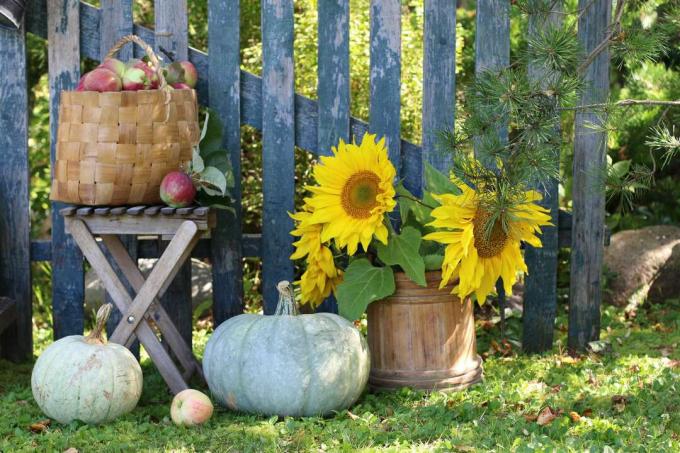
In September summer draws to a close and the days are getting shorter again. But don't worry, the gardening season is not over yet. In fact, there is a lot of gardening waiting in September as plants and beds need to be prepared for the golden autumn. But in the garden in September you can also harvest or even replant. In our article we will tell you which gardening tips you should definitely pay attention to in September and which gardening work is due in September.
contents
-
Sowing and planting in September
- What can you plant in September
- What can you sow in September?
- Harvest in September: which seasonal vegetables are ripe now?
- What blooms in September
- More work in the garden in September
Sowing and planting in September
The vegetable patches often empty themselves slowly in September because the harvest is still taking place, but no new plants are being sown. But even in September you can still sow and plant wonderfully. Here you will find an overview of the various plants that can still easily migrate into the garden in September.
What can you plant in September
Many don't think September is the right time of year to plant new plants. On the contrary - for some plants, September is even the optimal time to be planted, because they benefit from the warm soil temperatures. Particularly Peonies (Paeonia) and Irises (iris) should be planted in September, because then they still have enough time to form enough new roots for the winter. Even steppe candles (Eremurus) develop splendidly after planting in September. Bulbs can also be planted in September: tulips (Tulipa), Lilies (Lilium) and winterlings (Eranthis hyemalis) are just a few of the bulbous plants that can be planted for next spring. Evergreen trees like yew (Taxus baccata) or ivy (Hedera helix) can be planted particularly well in September.
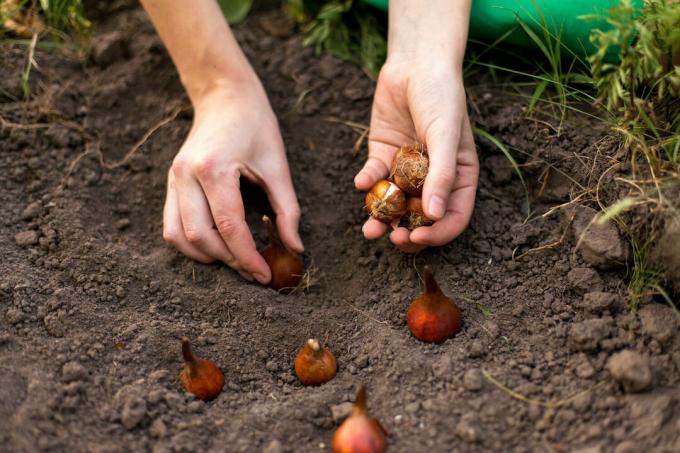
Vegetables can also be grown in autumn. Especially types of cabbage like cauliflower (Brassica oleracea var. botrytis) or the Pak Choi (Brassica rapa subsp. chinensis) can be brought forward in the house and planted in the bed from September. Broccoli (Brassica oleracea var. italica) and kale plants (Brassica oleracea var.sabellica) can still be planted in the bed in September without any problems. If you like it a little more unusual, you can also enjoy Asian green in the snow in September (Brassica juncea var. mulitceps) plant out. Late spinach varieties ensure crisp freshness in autumn (Spinacia oleracea). Even garlic (Allium sativum) is one of the plants that can still be planted in September. It is important to use local planting material that can cope with our climate. The garlic you can buy in most stores comes from warmer regions. Postelein (Claytonia perfoliata) and parsley (Petroselinum crispum) can still be planted in September and overwinter in the bed before they can be harvested in spring.
vegetables: Cauliflower, broccoli, greens in the snow, kale, garlic, pak choi, parsley, postelein, spinach, winter hedge onion
Ornamental garden: Ivy, yew, ilex, crocuses, lilies, daffodils, peonies, rhododendrons, snowdrops, irises, steppe candles, tulips, winterlings
What can you sow in September?
What else can you sow in September? A legitimate question, after all, from now on the days will get shorter and the falling temperatures will not make it easier for the plants to grow. Amazingly, there are still a number of plants that can cope well with the difficult conditions in September. Late Savoy Cabbage (Brassica oleracea var. sabauda), Cauliflower- (Brassica oleracea var. botrytis) or white cabbage varieties (Brassica oleracea var. capitata) can be sown in the bed in September without any problems. Winter hedge onions (Allium fistulosum) and mustard (Sinapis) thrive if sown in September. Fast growing plants like radishes (Raphanus sativus var. sativus) or cut salads can be planted in the bed at the beginning of September and are ready for harvest when autumn falls.
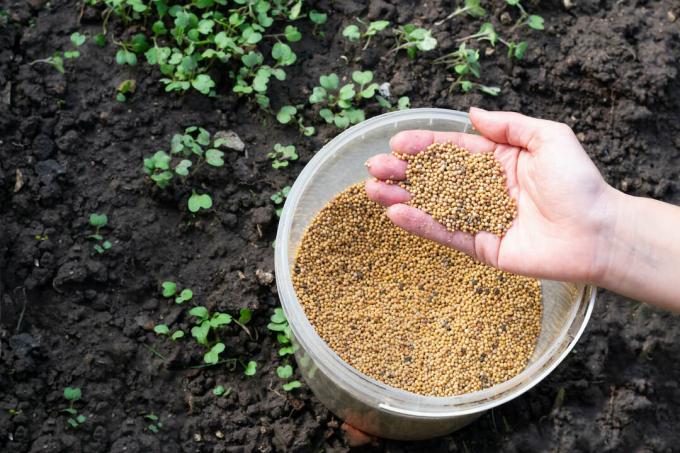
If you don't want to grow vegetables in September, you should still not leave your beds empty: sow Phacelia (Phacelia), this not only reduces soil erosion, but also acts as a natural one Green manure in autumn. Even winter vetch (Vicia villosa) or bitter lupine (Lupinus angustifolius) can be sown as green manure in September without any problems. In the ornamental garden, the time has come to add biennial flowers such as the forest poppy (Meconopsis cambrica) or forget-me-not (Myosotis) to sow so that they can show themselves in their full glory next year. Even Cold germ like monkshood (Aconite) or daylily (Hemerocallis) are sown in September as they need the cold of winter to start growing in spring.
vegetables: Cauliflower, cress, Swiss chard, radishes, rhubarb, salads, mustard, spinach, tatsoi, white cabbage, winter hedge onions, savoy cabbage
Green manure: Bitter lupine, phacelia, mustard, winter vetch
Ornamental garden: Bergenia, iron hat, torch lily, foxglove, lady's mantle, Levkojen, phlox, day lily, forget-me-not, forest poppy
Harvest in September: which seasonal vegetables are ripe now?
The vegetable patch in September is often richly filled with various delicacies: One of the classic seasonal vegetables in September is of course the pumpkin (Cucurbita), but also Turnips (Brassica napobrassica) and Beetroot (Beta vulgaris) should not be missing in autumn. In addition, many types of cabbage are harvested in September, such as pointed cabbage, savoy cabbage or Chinese cabbage. Also crunchy salads like Bativa (Lactuca sativa var. longifolia) or oak leaf (Lactuca sativa var. crispa), is still often harvested in September. If you like it a little hotter, you can order fresh horseradish (Armoracia rusticana) be happy.

But those with a sweet tooth will also get their money's worth, because ripe apples hang on the fruit trees (Malus), Plums (Prunus domestica) and pears (Pyrus). Grapes (Vitis) also invite you to pick them like blackberries (Rubus) and blueberries (Vaccinium myrtillus), which are also in season in September. In addition, it is now time for them Harvesting elderberries (Sambucus). With the aromatic Sea buckthorn (Hippophae rhamnoides) you have to be careful in September that the berries do not turn over - if you pick them too late, they can develop a rancid aftertaste.
vegetables: Cauliflower, broccoli, mushrooms, Chinese cabbage, pickled cucumbers, fennel, carrots, potatoes, kohlrabi, pumpkin, chard, horseradish, paprika, parsnips, leeks, radishes, Beetroot, radish, red cabbage, cucumber, celery tuber, spinach, pointed cabbage, runner beans, celery, turnips, tomatoes, white cabbage, savoy cabbage, sweet corn, zucchini, Onions
salad: Bativa, oak leaf, iceberg, lettuce, lollo rosso, dandelion, radicchio
fruit: Apples, pears, blackberries, rose hips, blueberries, raspberries, elderberries, cornel cherries, peaches, plums, physalis, cranberries, watermelon, grapes
What blooms in September
The splendor of flowers in September is no magic work. In fact, so many different shrubs, shrubs and flowers bloom in September that it is not so easy to answer the question "What blooms in September?" The classic flowers that still bloom in September definitely include asters (Asteraceae), Sun hat (Echinacea) and sedum (Sedum). The autumn monkshood also blooms particularly expressively in September (Aconitum carmichaelii) - but be careful: the plant is poisonous and should not get into the reach of small children. Enchant in the flowerbed Autumn anemones (Anemone hupehensis) with their impressive flowers. A special eye-catcher in September has always been the sunflower (Helianthus annuus), which can be seen from afar. The saffron crocus is a pretty and delicate eye-catcher in the flower bed (Crocus sativus), from which the expensive saffron spice is obtained. Among the woody plants, the thousand-flower bush (Tetradium daniellii) its pretty flowers and attracts bees like magic. In the herb garden, on the other hand, there is the mountain savory (Satureja montana) in full bloom.
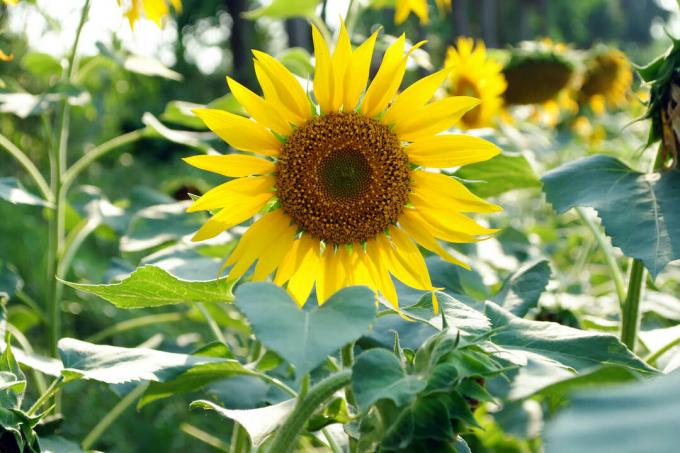
Perennials: Aster, torch lily, sedum plant, goldenrod, autumn anemone, autumn monkshood, sun bride, sun hat
Herbs: Basil, mountain savory, cola, thyme, hyssop
flower: Saffron crocus, sunflower, zinnia
Woods: Hydrangea, thousand-flower shrub
More work in the garden in September
Gardening in September is not just about sowing and harvesting: caring for vegetables, propagating perennials or fertilizing should not be missing. We have compiled work that is still pending in the garden month of September for you here.
Fertilize vegetables: Celeriac still has a real growth spurt in September and needs to be supplied with nutrients accordingly. Tomatoes and peppers also benefit from a final fertilization with a liquid vegetable fertilizer such as this in September Plantura organic tomato & vegetable fertilizer.
Put pumpkins up: Ripening pumpkins that lie on the ground often deform and are more prone to contamination and rot. To prevent this, it is a good idea to bed the pumpkins on straw so that they do not lie on the ground.

Attach glue rings: The flightless females of the Frostspanner (Operophtera brumata) climb up the trunks of fruit trees from October and lay their eggs. To prevent this, it is advisable to equip fruit trees with glue rings as early as September.
Clean the nest box: Many bird species not only use nesting boxes to raise their young, they are also used as a weatherproof shelter in winter. So that the nest box does not become a place of transmission of diseases, it is part of the gardening work in September to clean the nest box. To do this, old nesting material is removed and the dirt swept away. Chemical cleaning agents should not be used because they can have harmful effects on the new residents or put them off due to their smell.
Care for peppers and tomatoes: Even in September tomatoes (Solanum lycopersicum) and peppers (Capsicum) still new flowers. However, these should be removed regularly. In this way, the already existing fruits ripen better and can be harvested before the onset of winter.
Maintain lawn: Summer is often particularly stressful for the lawn - so the lawn needs an extra dose of care in autumn. With an autumn lawn fertilizer, for example the Plantura autumn lawn fertilizer, you can not only strengthen the lawn, but also prepare it perfectly for the coming winter.
Fertilize roses: So that roses (pink) survive the winter well, you should again in September with a low-chloride potassium fertilizer like ours Plantura organic rose fertilizer, are supplied. Among other things, this promotes the lignification of the shoots and thus ensures better frost resistance.
Harvesting seeds for the next year: Runner bean seeds (Phaseolus vulgaris) can be collected and dried in September. Late September, when the pod loses its green color and becomes dry, is the perfect time to collect the beans for seed production. The seeds of annual plants such as sunflowers, marigolds, begonias and Co. can also be used in September as Seeds for the next year be won.

Share perennials: If you want to multiply your perennials or if a perennial has grown too big in the bed, you can divide it up in September. To do this, the root ball is loosened from the earth and then divided with a spade. Then the perennials can be replanted in their new place.
Cut back perennials: Some perennials, for example the girl's eye (Coreopsis) or the Cockade flower (Gaillardia), are so exhausted during flowering that pruning is inevitable if you want to enjoy them in the next year as well. A strong pruning close to the ground at the end of September, on the other hand, helps the plants to bloom in full beauty also in the next year.
Build winter quarters for hedgehogs: Hedgehogs are welcome garden dwellers. Who with his garden the Support hedgehogs in autumn can provide suitable winter quarters for the cute animals in September. A pile of dry leaves in a quiet corner is just as suitable for this as a special hedgehog house.
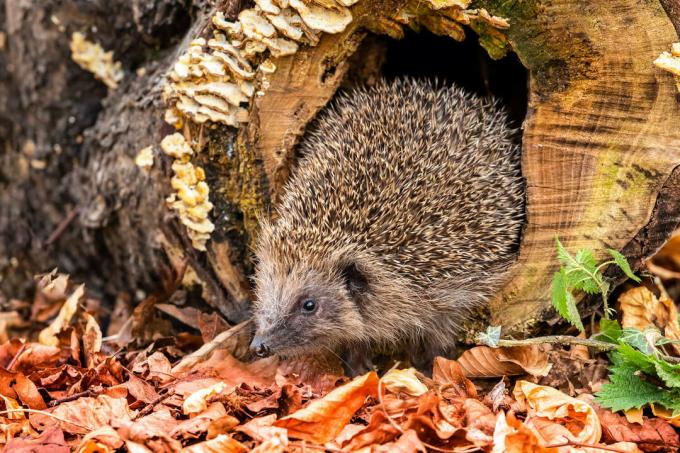
The golden October brings wonderful days with it every year to spend time in your own garden. which Gardening in October has to be done, you can find out in our article.



